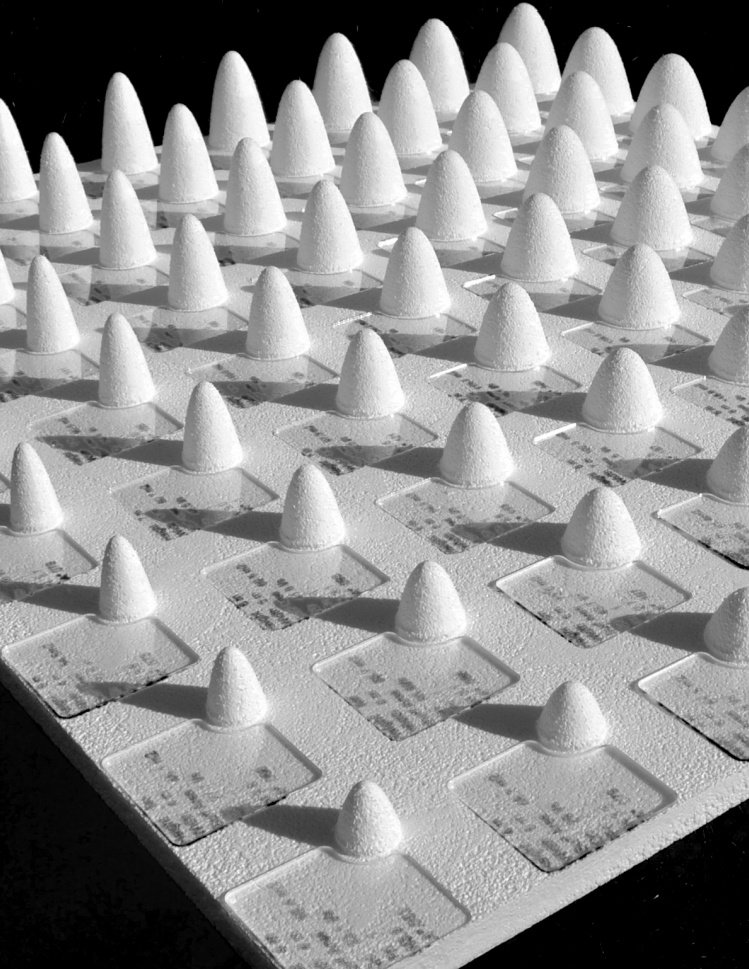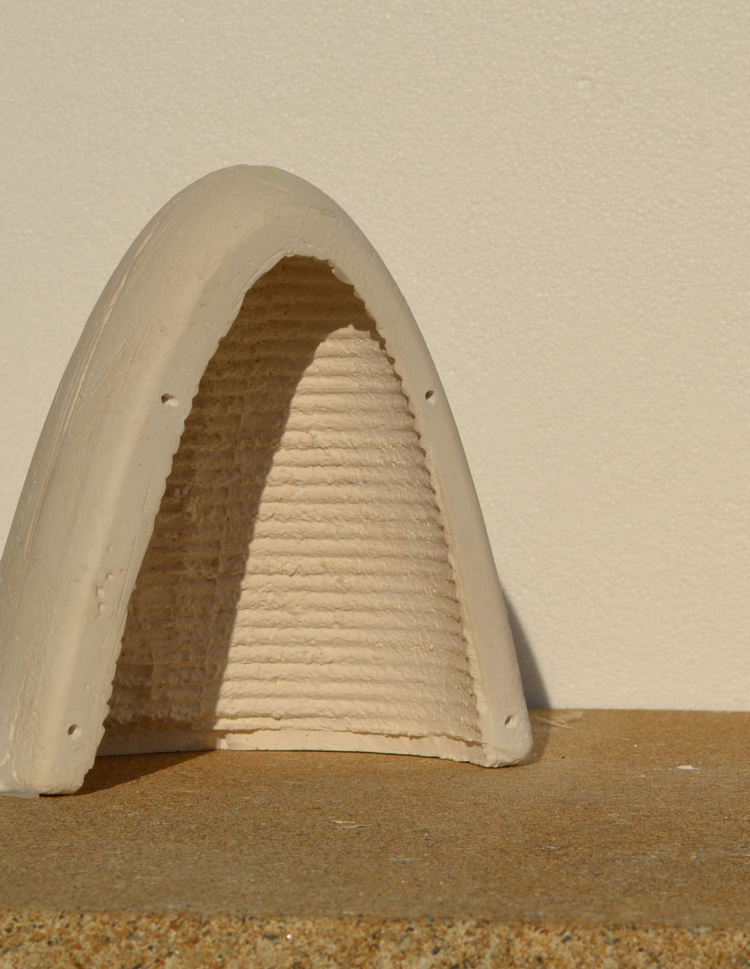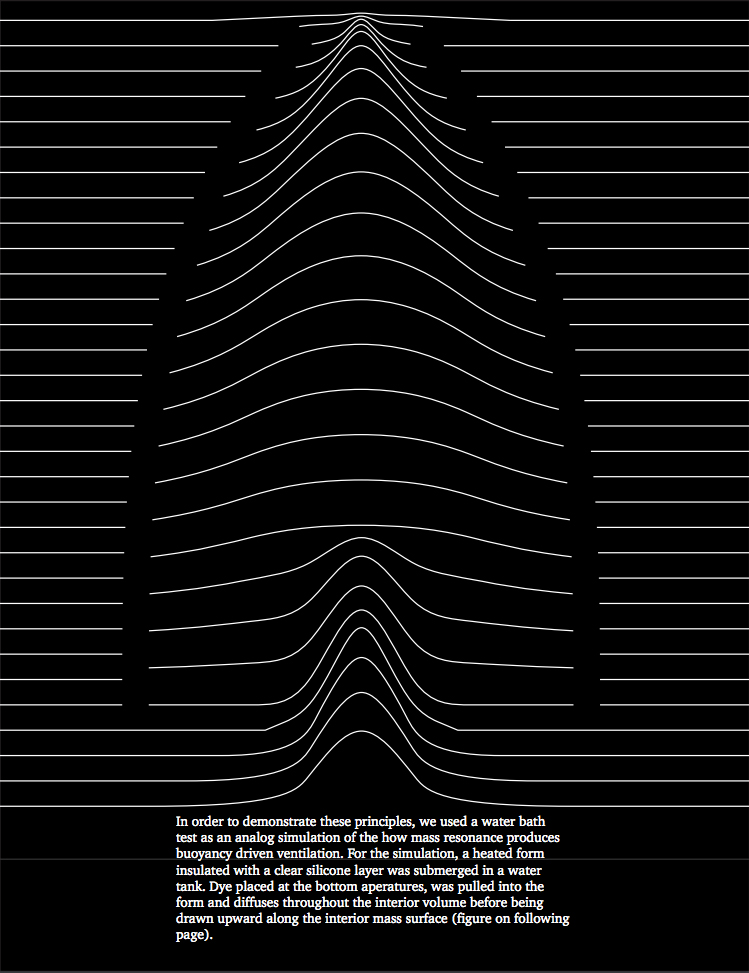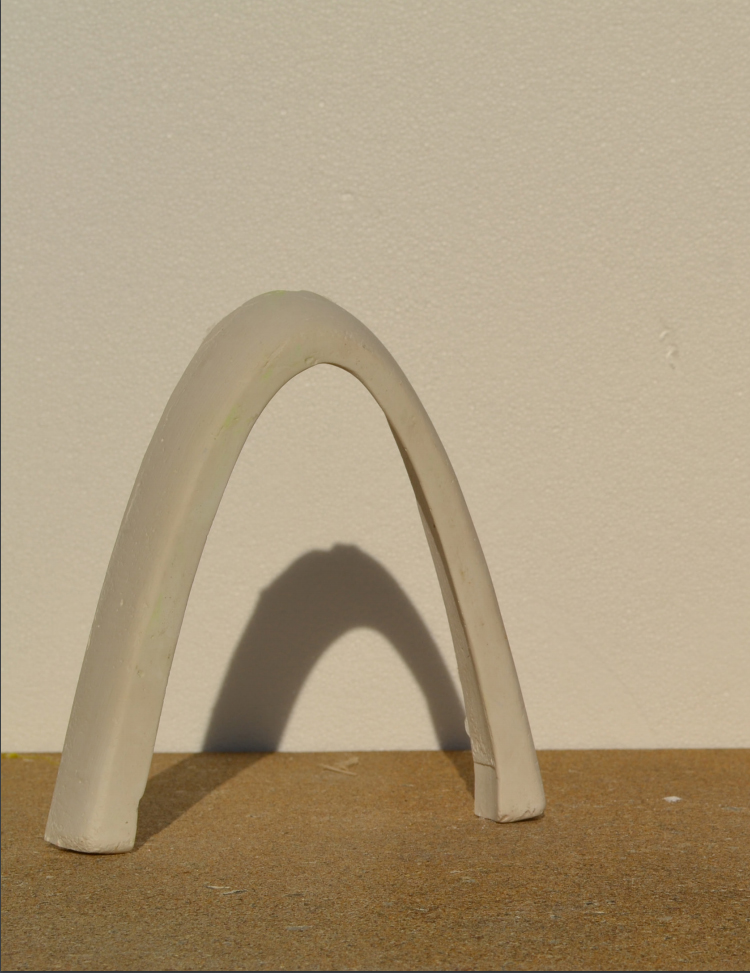Hyperbolic Cosines: Recasting Form Finding to Induce Ventilation Performance
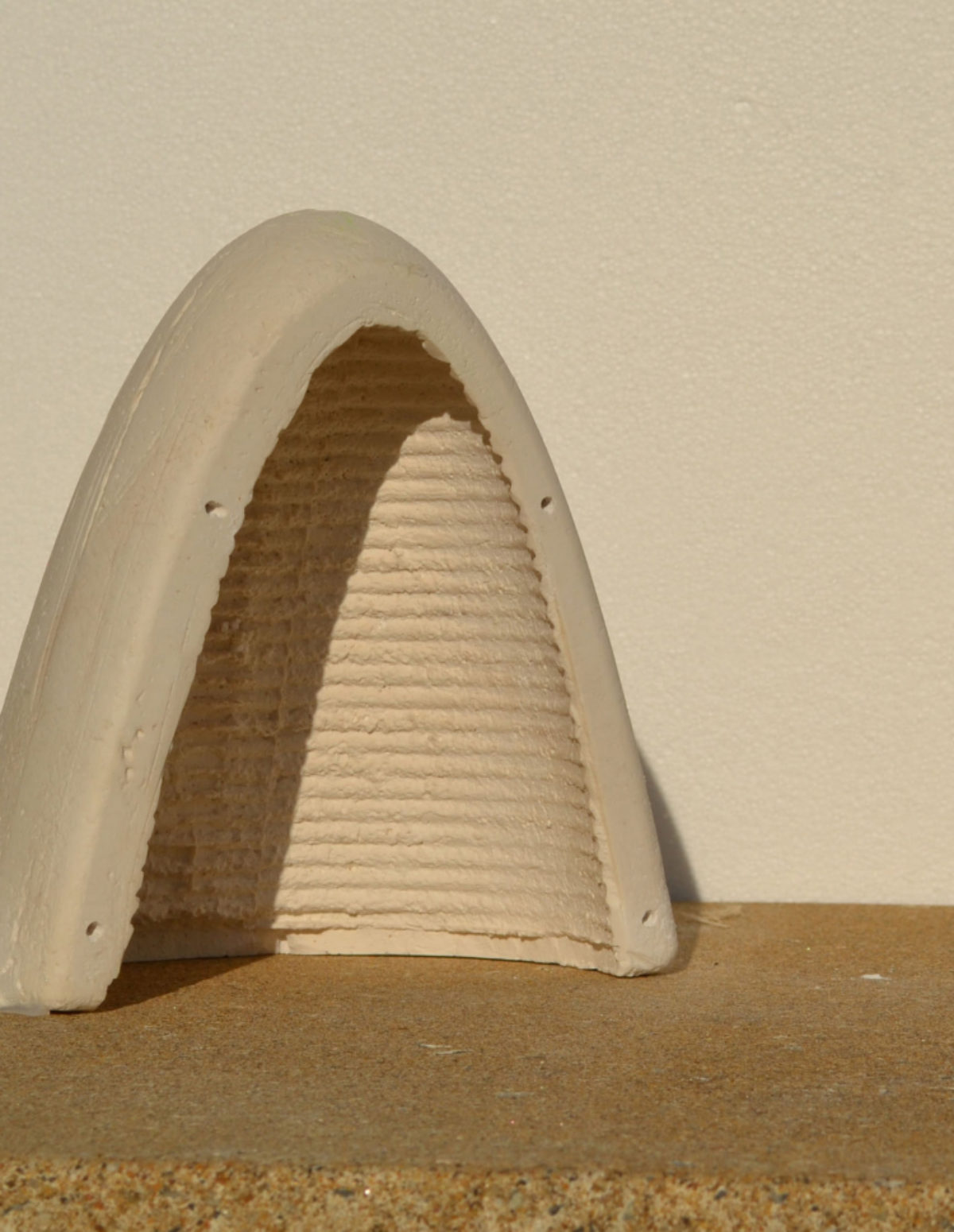
We explored the allometric potential of a funicular catenary form to both modulate interior climatic conditions and provide fresh air. The project was situated in the dry desert climate of Palm Spring, California because of the large year-round dry bulb daily temperature oscillations. Weather data confirmed typical daily diurnal swings of between 14-18° C, with larger swings in during the summer months (shown below). We anticipated that the form when in sync with its “peak” resonance cycle would produce conditions at the upward bounds of the Thermal Comfort Tool, developed by the Center for the Built Environment at the University of California Berkeley. While we were correct that large daily oscillations would result in a modulation of interior conditions, the effect of “peak” oscillation produced a reduction of approximately 5° C with ventilation rates exceeding the 10 liters/second per person. This was considerable drop through mass coupled ventilation.
The investigation of the Hyperbolic Cosines, an exercise in form finding through performative criteria uncovered a duality in tension. The tension uncovered exists between the forms ability to drop the overall temperature of the defined interior space and the ability to create air flow; air flow defined by pulling in exterior air into the interior and subsequent exhaust of to the exterior environment. The choking of airflow compromises the air changes required for the interior environment and inhabitants, creating a space resembling something closer to a hermitically sealed envelope. This is in opposition to an open exchange between the interior and the exterior, which was extracted from the taxonomy created through a framework of performative criteria. However, when the space is allowed to produce air exchange or air flow the ability of the form to drop the interior temperature diminishes. The exposure of the duality specific to an architectural intervention comes from the need to lower the interior temperature and the ability of the form to produce air flow. The inability of the form to function as inhabitable space limits the opportunities for an engagement at the scale of an architectural intervention, as shelter. When the form can not play host to inhabitants in the form of shelter the performative criteria must be questioned. The performance shifts from creating an interior space with the intent to produce comfort for human inhabitants to a mechanical provocation. The forms ability to drive mass air flow defines the intentionality closer to that of a mechanical intervention.
